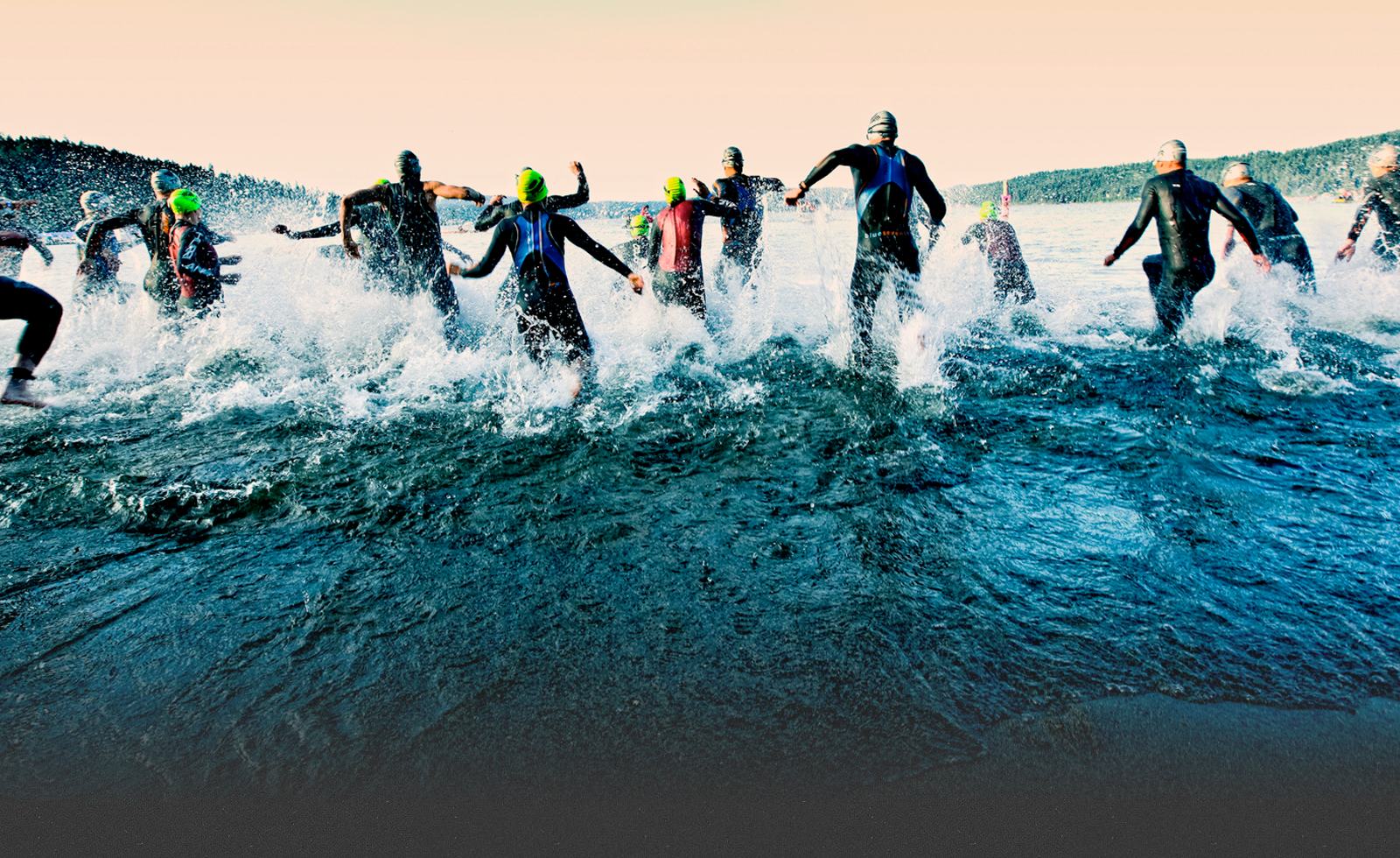
James: Yes [laughs]
Jackie: So, hi James.
James: Hello
Jackie: Triathlon, that’s your main event. I know you’re very sporty but I know that you take part in triathlons. I must admit I’m a little bit naïve about what a triathlon is. Can you explain the event to me.
James: So a triathlon involves swimming followed by a cycle and then a run. And the swim, the cycle and the run can vary in length depending on the race so there’s varying different lengths of triathlons.
Jackie: So, it’s not… it’s not a set distance for each… for each component?
James: Um… they vary depending on the type of triathlon so they range from sprint all the way up to an Ironman.
Jackie: An Ironman? oh right, okay, okay. And it always starts with swimming?
James: Always starts with swimming and then cycling and then running, always in that order.
Jackie: Tell me about the clothes that you have to wear then because am I right in saying that as soon as you’ve done the swimming you go straight into the running?*
James: Yes, you wear something called a tri-suit and you wear that throughout the event… the event so it’s basically um… a piece of lycra, a one-piece of lycra and often in the swim you wear wetsuit so you wear this underneath and you get out of the water… when you get out of the water you take your wetsuit off and then once you’re in transition, where you change over from the swim to the cycle, you have to put on your helmet, grab your bike, run out of transition, jump on your bike and then you cycle in your dry suit and then you come back to transition once you’ve finished the cycle and um… you put your bike back again, put your trainers on and run. So you’re wearing the same thing throughout, you’re only just changing what’s on your feet and what’s on your head.
Jackie: Wow. So what kind of distances do you do for each of these different components?
James: So… um… I mainly do something called half Ironman or Ironman so a full Ironman is a two point four mile swim, a hundred and twelve mile bike followed by a marathon and a half-marathon… sorry, a half-Ironman is a half of all those distances.
Jackie: Okay, goodness. So how long does that take?
James: Last one I did it took me ten and a half hours for the last Ironman.
Jackie: For the… for the full Ironman.
James: For a full Ironman, yeah.
Jackie: So it’s all day?
James: Yes, a whole day, yeah.
Jackie: And you must be completely exhausted at the end?
James: Yes, definitely. And the next day I struggle to stand up when I get out of bed. It takes me a few minutes, I have to stand there and hold myself until my legs wake up again, it’s pretty sore.
Jackie: So, special diet? Special training?
James: Yes, you have to eat a lot basically…
Jackie: I know that [laughs].
James: I have to eat er… when you’re training hard you can eat up to anything like three or four thousand calories a day.
Jackie: Which is double what a lot of people should eat in a day.
James: Yes, definitely, just because of the amount of calories you’re burning.
Jackie: And so how many events do you do in a year?
James: I try to race… you only race in the summer season and I race about once a month because it’s quite an expensive sport.
Jackie: So I know that here you’re visiting us because you’re taking part in a… in an event. Can you talk about that?
James: Yes, so this is the European Championships…
Jackie: Oh, wow.
James: It’s in Pontevedra, Spain.
Jackie: Well, James I can only wish you all the best for the event, good luck.
James: Thank you very much, cheers.
* Jackie forgot that cycling follows swimming, not running